#Sokoto State
Text
ASUU Accuses FG of Trying To Increase School Fees
ASUU Accuses FG of Trying To Increase School Fees
The Academic Staff Union of Universities, ASUU, Abubakar Tafawa Balewa University, Bauchi, branche, has accused the Federal Government of not being interested in funding public universities in the country.
The union accused Federal Government of hiding under the pretext that the government has no money so, it would introduce exorbitant school fees that the ordinary Nigerian may not be able to…

View On WordPress
0 notes
Text
Deborah Samuel is yet to get justice, despite killers showing face in video
It is now over four months since Ms Deborah was brutally murdered in Shehu Shagari College of Education Sokoto, Nigeria.
Despite the fact that the murderers made a video of the killing showing their own faces, nobody has been arrested and charged with murder.
Those arrested where those charged with what they tagged as “public disturbance”. Just two persons. They even had 34 lawyers to defend…
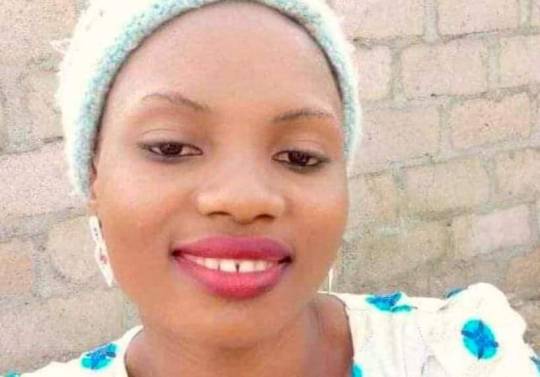
View On WordPress
0 notes
Text
Tambuwal emerges as NGF interim chairman
Tambuwal emerges as NGF interim chairman
The governor of Sokoto State, Aminu Tambuwal, has emerged as the acting chairman of the Nigeria Governors’ Forum (NGF).
Mr Tambuwal was appointed the NGF chairman at the meeting in Abuja on Thursday, a statement by the Forum said.
He will be in office till May next year when a new chairman will be elected.
He will replace Governor Kayode Fayemi of Ekiti State whose tenure as governor ends on 16…
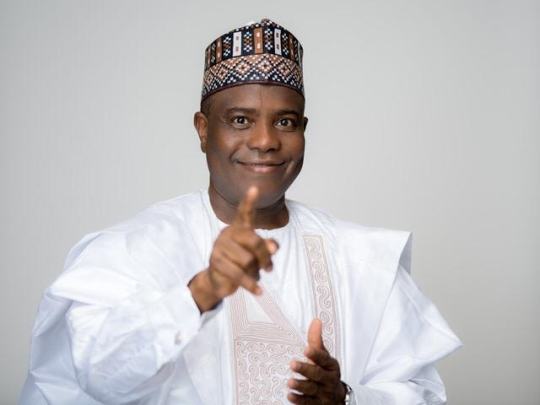
View On WordPress
#Aminu Tambuwal#Governor Kayode Fayemi#National Economic Council (NEC)#Nigeria Governors Forum (NGF)#Sokoto state
0 notes
Text
Customer stabs sex worker to death in Sokoto over N1,000 payment
Customer stabs sex worker to death in Sokoto over N1,000 payment
A commercial sex worker in Kwanawa, a suburb of the Sokoto metropolis, in the Dange/Shuni Local Government Area of Sokoto State has been stabbed to death.
Okay.ng gathered that the victim resided in one of the brothels within the area, which is known for all sort of illicit activities.
The state Police Public Relations Officer, DSP Sanusi Abubakar, while confirmed the incident saying that the…

View On WordPress
0 notes
Text
Sokoto State Police Command Set To Mop Up Unlicensed Fire Arms Within The State
Sokoto State Police Command Set To Mop Up Unlicensed Fire Arms Within The State
Sokoto State Police Command is hereby calling on the good people of the State especially those in possession of unlicensed firearms to voluntarily surrender such Arms to the nearest police station as soon as possible.
You are also assured that there will be no punitive measures or any form of legal proceedings nor…

View On WordPress
0 notes
Text
FISHING FESTIVAL IN AFRICA
Argungu Fishing Festival


There are lovely cultures and traditions in Africa
Black Americans should read about their heritage
Welcome to Argungu Fishing Festival
Argungu fishing festival is a way of life for the people of Kebbi State. The festival preserves tradition and promotes conservation. The annual festival takes place in February and marks the end of farming season and start of the fishing season. The festival is a four-day cultural event. It begins with an agricultural show, water sport displays, traditional Kebbawa entertainments and ends with the spectacular fishing competition in the Mata Fadan River.
The History
The Argungu fishing festival began in 1934, marking the end of centuries old hostility between Sokoto Caliphate and Kebbi Kingdom. The festival quickly became a celebration of life and unity.

The River Sacrifice
Before the commencement of the fishing festival, the custodian of the river 'Sarkin Ruwa' ensures the river is safe by performing sacrifices to the river oracle to gain its permission.

Sarkin Ruwa
Like his fathers before him, the Sarkin Ruwa is the official custodian of the Mata Fada River. This responsibility is passed down for generation. Without the consent of the Sarkin Ruwa, no fish can be caught. To ensure the river is safe for fishing, he dispels the crocodiles resident in the river and invites all the fishes in the rivers connected to Mata Fada river.
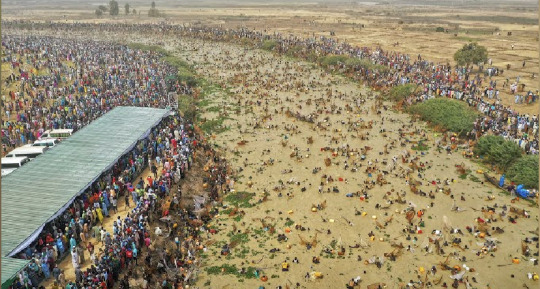
Matan Fada River
The river is a source of pride to the people of Argungu, it serves as a source of food and irrigation for their farm lands. Its about 50 meters wide and about 50 feet deep.
Race To Fish
At the sound of a gun, thousands of fishermen race towards the mata fadan river, leaping into the water to begin their search for the winning freshwater fish
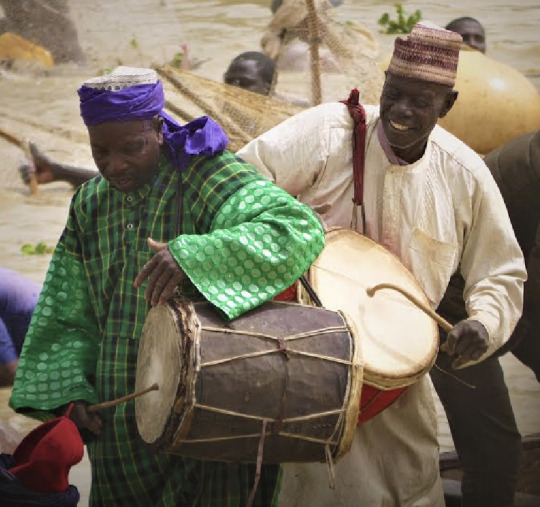
Music and Rhythm
As the fishermen leap into the water, the drummers begin to beat their drums. Filling the air with authentic Kebbawa traditional rhythm. Although women are not allowed to participate in the fishing competition, they are not left out of the drummers group. The drums are traditional Kebbawa drum designs, made of cow skin.
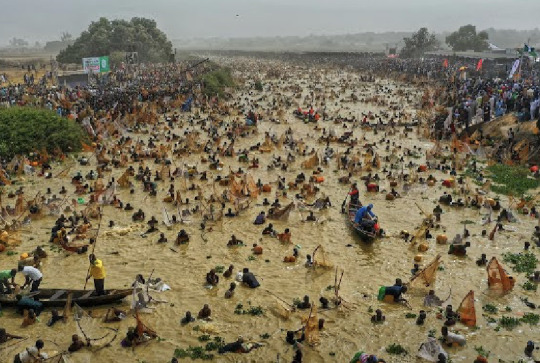
Over 50,000 fishermen from northern Nigeria and surrounding countries participate in the fishing competition annually.
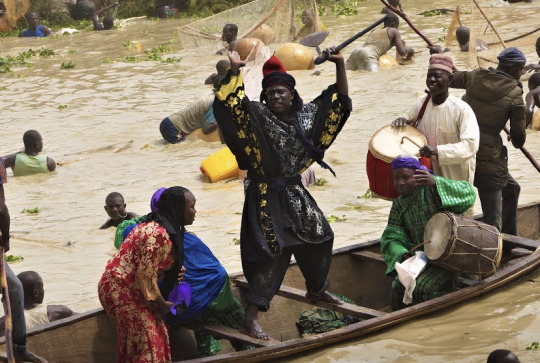
The Sarkin Ruwa and the drummers move to and fro the mata fada river on their canoes, entertaining the fishermen as they search the river for the winning Giwan Ruwa.
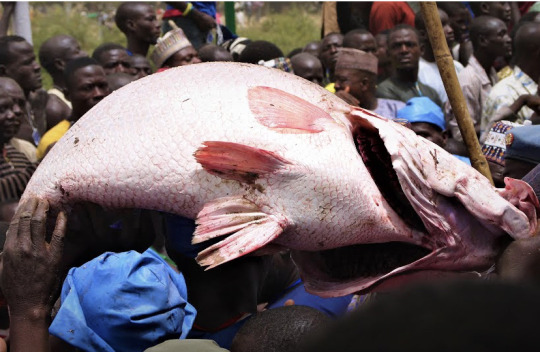
Giwan Ruwa
Giwan Ruwa 'Fish' from the mata fadan river can weigh up to 75 kilograms. The fisherman with the biggest catch wins the fishing competition.
#life#animals#culture#aesthetic#black history#history#blm blacklivesmatter#anime and manga#architecture#black community#traditional illustration#traditional doodle#blacklivesmatter#black heritage
279 notes
·
View notes
Text
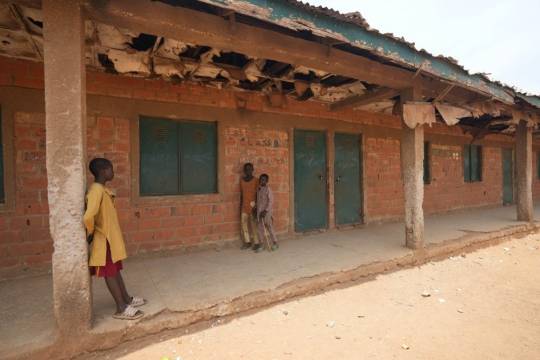
Various armed groups have kidnapped hundreds of people, including 287 schoolchildren, across northern Nigeria in a series of alarming attacks since late February. The kidnappings are the latest indication of Nigeria’s spiraling security crisis, as communities continue to face severe threats from Islamist insurgents like Boko Haram in the country’s northeast and other criminal groups in the northwest.
On February 29, suspected Boko Haram insurgents abducted over 200 internally displaced people, many of them children, in the Ngala Local Government Area of Borno State.
Then, on March 7, criminal gangs known as “bandits” kidnapped 287 students, including many girls, at the government secondary school in Kuriga town, in northwestern Kaduna State. Two days later, bandits broke into a boarding school in Gidan Bakuso village in Sokoto State and kidnapped 15 children as they slept.
The abductions have continued. Most recently, on March 18, over 87 people were reported to have been kidnapped in Kajuru community in Kaduna State. (Human Rights Watch)
11 notes
·
View notes
Photo
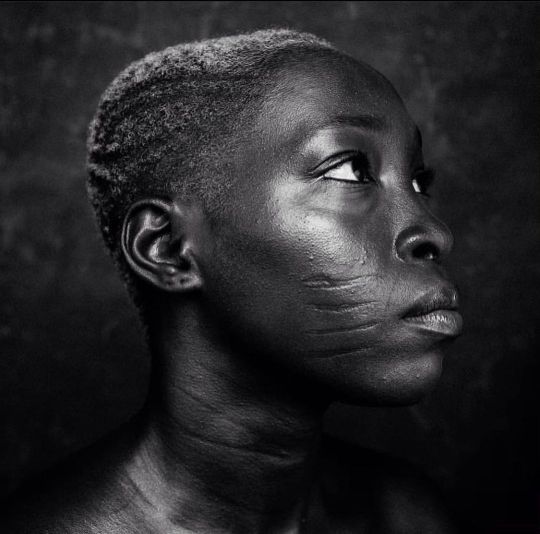

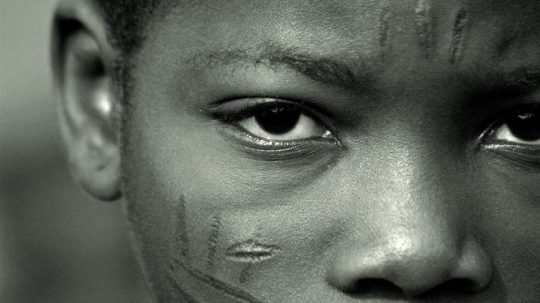
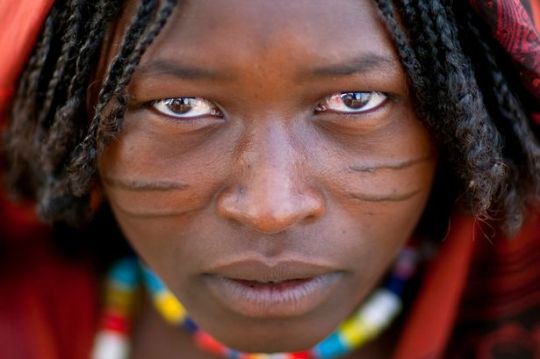

Tribal Marks: The African Tattoo
Tribal marks, also known as scarification, is a traditional practice that has been used by various ethnic groups in Africa for centuries. It involves cutting or scarring the skin in a specific pattern or design, usually on the face, and is typically done during childhood or adolescence.
The marks are used to identify a person's tribe or ethnic group, and can also serve as a form of beauty or adornment.
The tradition of tribal marks varies among different ethnic groups and regions in Africa. In Nigeria for instance, it's mostly practiced by ethnic groups such as the Yoruba, Igbo, and Efik. Each ethnic group has its own unique designs and patterns, and the marks can have different meanings or symbolic significance.
Among the Efik, the marks are used as a symbol of beauty, and young girls would be scarred with intricate designs as part of their initiation into womanhood.
The tradition of tribal marks has been on the decline in recent years, as many people opt for other forms of self-expression or choose not to have them at all.
Some people have abandoned the tradition because of the stigma associated with the marks and discrimination that is faced by those who have them.
Additionally, the government of Nigeria banned the practice in the late 1970s, although enforcement of the ban has been lax and it's still being practiced by some communities.
It's worth noting that the tradition of scarification is not limited to Africa, and has been practiced in other parts of the world, including Oceania, Asia, and the Americas.

Mr Akeem is royal-born, so he has long stripes on his face.
"It is like a football jersey," he quips, adding that they made him popular in the local market.
On a serious note, Mr Akeem says he regards the scars as sacred, and does not believe people should mark their faces just for beautification.
This need for identification through facial marks was also strong in northern Nigeria, especially among the Gobir people of Sokoto state.
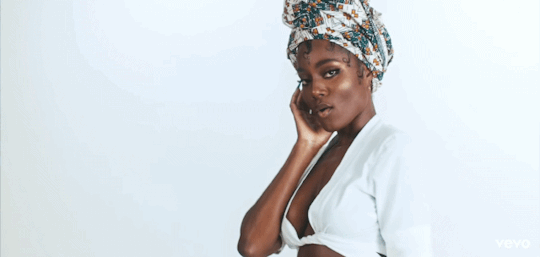
Ibrahim Makkuwana's ancestors, pastoralists from Gubur in present-day Sokoto, did not have facial marks. But, he said, as they moved around looking for farming land, "they fought many battles and conquered many places".
They then decided to make distinctive marks on their cheeks, "akin to the ones their animals had, which would help them in identifying their kinsmen during battles", Mr Makkuwana says.
"That was the origin of our marks," he tells the BBC.
But there is also a distinction between the Gobirawas.
Those with six scars on one cheek and seven on the other have both parents from royalty. Those with six marks on both sides have only their mothers from the royal family.
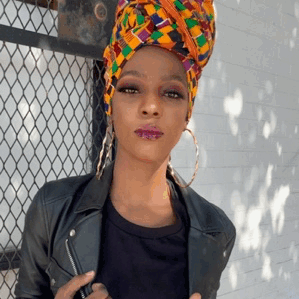
Then there are the children of butchers, with nine scars on one side and 11 on the other, while those with five and six marks on either side trace their lineage to hunters.
As for fishermen, they have distinct marks drawn up to their ears.
Meanwhile, among the Yorubas and Igbos of southern Nigeria, some marks are linked to life and death.
There was a belief in their communities that some children were destined to die before puberty.
Known as Abiku and Ogbanje respectively by the two ethnic groups, these children were believed, by the Yoruba, to belong to a coven of demons living in large iroko and baobab trees.
It was common for women to lose several children at a young age in succession, and it was thought it was the same child, reappearing again and again to torment their mother.
Such children were then marked to make them unrecognisable to their spirit mates so they would stay alive.
Many of these infant deaths are now known to be caused by sickle cell anaemia, an inherited disorder common among African people.
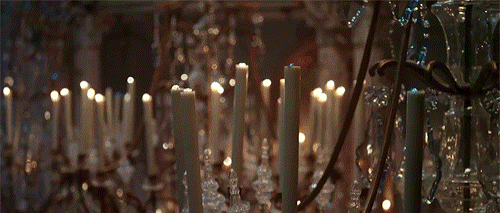
Yakub Lawal in Ibadan in south-western Oyo state, was marked as an Abiku.
"This is not my first sojourn to earth, I have been here before," he says.
"I died thrice, and on my fourth return I was given these marks to stop me from returning to the spirit world," he adds.
Closely related to stories of the Abiku and Ogbanje are those whose marks are in memory of a departed family member or one who has been "reborn".
#facial scars#african scars#tattoos#kemetic dreams#african culture#body art#abiku#yoruba#epik#sickle cell anemia
43 notes
·
View notes
Text
Unfortunately the article's claim that slavery was peripheral to African states has the problem that the abolition of the trade brought Dahomey, Benin, and the Sokoto Caliphate to near economic disintegration:
This article in turn is a good case of decolonization historiography as applied to the Kingdom of Dahomey. While I consider the claim that 'slavery was peripheral to the economies of African states' to be special pleading given the abolition of the slave trade brought Dahomey, Benin, and the Sokoto Caliphate to major weakness that made the conquests in the Scramble a matter of marching and the butcher and burn approach, it does make the point that to understand the decisions of African rulers the focus needs to be on African, not European, understandings of what their goals were.
It might be more easily noted that the African states did not see the dangers in mortgaging so much of their liquid wealth in the forms of slavery and doing little to build up anything more diverse.....but that should be equally put into the context that the European states only saw this *after* the era of mercantilism and the start of capitalism made it clear that a mono-focused economy is a glass dome waiting a good hit from a sledgehammer. The conditions furthering this shift did not apply to Dahomey, which made its bones and its money by exploiting the slave trade in its classical system and in the pattern most familiarly known to modern eyes.
Namely its soldiers, including the Ahosi, rampaged in the interior of Africa dragging poor sorry saps who couldn't run away fast enough by those human chains to ports and avoiding anything done to their *own* people with Oyo a particular favorite of their raids. It is a not entirely dissimilar result to Bolivarianism in Venezuela mortgaging the economy solely to oil....and then OPEC pushed oil prices off a roof and took the Venezuelan economy with it.
Judging Dahomey by its own standards likewise means recognizing that an autocratic society has all the usual brittleness of autocratic societies, including the endemic risks of military putsches that tended to be key parts in how Europeans finally brought African states over the brink of collapse. When the slave trade would implode in the 1830s the prosperity of Dahomey started to creak with it. 50 years later when European power returned with a deadly vengeance it was not strong states they faced outside of cases like Ethiopia or Kanem-Bornu where the slave trades in Western and Central and Eastern Africa were at their height, it was brittle ones devastated by the loss of much of their mobile capital and the ability to replenish supplies of gunpowder and firearms.
#lightdancer comments on history#black history month#african history#military history#kingdom of dahomey#and I'm going to be impolite enough to say it#there is literally no good or defensible system of slavery#even the mamluks who had it easiest of any group of slaves were still enslaved and subject to all that entailed#so claiming African slavery is more moral than European will go over poorly as it deserves to do#I highly doubt the enslaved people whether they were sold to the hellbound ships or not would have agreed they were better off as slaves
4 notes
·
View notes
Text
NDLEA intercepts Cocaine in Soaps
NDLEA intercepts Cocaine in Soaps
The village head of Gidan Abba in Bodinga local government area of Sokoto State, Abubakar Ibrahim, was among eleven suspects arrested in interdiction operations in which Nine Hundred and Ninety One Thousand Three Hundred and Twenty (991,320) pills of pharmaceutical opioids and 1,251kgs of cannabis and khat as well as 46.637 kilograms of methamphetamine, cocaine and heroin were recovered by…
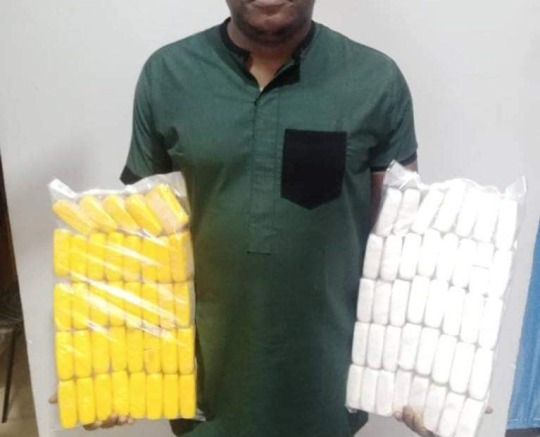
View On WordPress
0 notes
Text
Gunmen kidnap teenager, kill four in Sokoto community
Gunmen kidnapped teenager and killed four people on their farmland in a community close to the Gandi district of the Rabba Local Government Area in Sokoto to state on Saturday.
The Nigeria Police Force, Sokoto State Command, DSP Sanusi Abubakar, confirmed that the assailants attacked the farmers on their farms with dangerous weapons and in the process killed four persons.
He stated that the…

View On WordPress
0 notes
Text
PREMIUM TIMES uncovers new financing scheme by Nigerian terrorists
PREMIUM TIMES uncovers new financing scheme by Nigerian terrorists
PREMIUM TIMES will start publishing a three-part series entitled “Merchants of Terror” from Monday, 3 October 2022.
The series is an on-the-ground investigation exposing a new financing scheme by Nigerian terrorists.
“Merchants of Terror” is a two-month long investigative work by Ibrahim Adeyemi, PREMIUM TIMES chief investigative reporter.
The report is the result of weeks of travelling across…
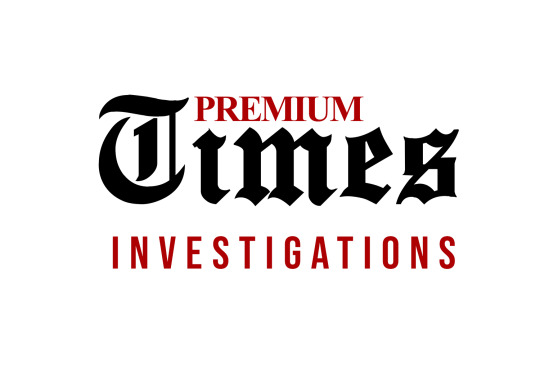
View On WordPress
0 notes
Photo

The Sahara and the Sahel were marked in the 19th century by a series of holy wars, modifying societies and state structures. Some men and groups question the powers that be. Dan Fodio founded the Caliphate of Sokoto and El-Hadj Omar the Toucouleur empire.
by @LegendesCarto
79 notes
·
View notes
Text

Interaction with the Heads of State
Sultan Muhammad Sa’ad Abu Bakar Sultan of Sokoto, Nigeria
5 notes
·
View notes
Text
On Haiti's day of ancestral remembrance, one of my siblings shared this letter with us. It is a monumental letter; it has not been often that Africa has collectively spoken to and about Haiti. It's a sad and beautiful love letter, and speaks some really deep truths. They are right; Haiti is dying right now and it is past time that the international community take responsibility for what hundreds of years of international interference has wrought. I hope this is the impetus for action because the reality of Haiti right now is worse than can accurately be described.
Below is an English translation of the above linked article.
EMBARGO: January 1 , 2023
And especially my body as well as my soul,
be careful not to cross your arms
in the sterile attitude of the spectator,
because life is not a spectacle,
because a sea of pains is not a proscenium,
because a a screaming man is not a dancing bear.
Aimé Césaire, Excerpt from Notebook of a Return to the Native Land (1939).
Captured in the valleys once trodden by Afarensis, or from Zanzibar, Madagascar, Gorée, El Mina, Bimbia, Benguela, Luanda, Cabinda, savannahs and forests, Ségou, Benin, Sokoto, the banks of the Congo or Oubangui, or along other great rivers, Ogooué, Casamance, Niger, Sanaga, having left the cosmogony that still binds them today to the mother of all continents, enslaved Africans arrived centuries ago in the Americas . In the worst forced migration of all time, the transatlantic slave trade took some of these men, women and children to Kiskeya, also known as Hispaniola, the island now shared by Haiti and the Republic Dominican Republic in the Caribbean Sea.
A land immersed in African traditions, Haiti, the "Pearl of the Antilles" or "Mountain Country" in the Taino language, is the nation where black slaves have shown the greatest resilience.
On August 14, 1791 in the forest of Bois Caïman, the voodoo priest Dutty Boukman organized a ceremony with the support of the priestess Cécile Fatiman, a "mambo" who performed sacrifices. On that memorable stormy night, the enslaved participants solemnly swore that servitude would be doomed, taking an oath to fight or die. They will later obey the orders of Toussaint Louverture in the revolt orchestrated by the remarkable leader. His epic – rare, if not unique – victory over one of the worst crimes ever committed against humanity continues to be recounted by many. Toussaint, a Caribbean island strategist and visionary, defeated the stubborn Napoleon, an island native from Corsica. This historic victory has been sung by great poets like Aimé Césaire.
On January 1, 2023, the first black republic celebrates the 219th anniversary of its glorious independence. However, the Pearl of the Antilles is dying.
Haiti was forced to pay a ransom to France as compensation to French slave owners for lost property, or else slavery would be reimposed and Haiti invaded. In May 2022, The New York Times published a well-researched series of articles titled “The Ransom: Haiti Lost Billions” [ The Ransom: Haiti Lost Billions], which recounts this perfidy. Port-au-Prince has so far paid up to $115 billion to France, a staggering sum for Haiti, a ransom that has left the poor country heavily indebted. Poor governance, corruption and invasions add to an already unbearable burden for the Haitian people. In addition, the American military occupation, from 1915 to 1934, had a large New York bank as its main financial backer. Ultimately, all of these factors could only result in a failed state fueled for many decades by the adrenaline of violence and the jolts of anarchy and chaos. The ravages of earthquakes, massive deforestation and the exile of its citizens have worsened the plight of Haiti.
Tormented and neglected, installed in instability, Haiti seems close to shipwreck. The security situation is dire. Famine affects nearly five million people. Shortly after the 2010 earthquake, a cholera epidemic imported by UN peacekeepers broke out in Haiti after no case had been detected there for more than a century. In the face of these accusations, the then United Nations Secretary-General, Ban Ki-moon, had the courage and integrity to issue a formal apology. Today, the resurgence of cholera is causing more deaths. On December 21, 2022, addressing the Security Council, United Nations Deputy Secretary-General Amina J. Mohammed said that “Haiti finds itself in a deepening crisis of a magnitude and unprecedented complexity."
One of the biggest challenges is that much of Port-au-Prince – a capital of nearly 3 million people – is in the hands of gangs. Their names are taken from urban tragedies – 400 Mawazos , Chen mechan , Fire-eaters… . The list of gang leaders includes Barbecue, Gaspiyai… . Their only motivation seems to be financial and criminal. The gangs have taken the country hostage: they kill; they rape; they are flying. Sexual violence is the breeding ground for a future in which society may lack cohesion.
The police are either overwhelmed or complicit. The Haitian army, that not-so-distant Macoute memory, was dismantled by the international community in the 1990s. Demobilized soldiers were never properly reintegrated into society. The judicial system is moribund. To date, the international community has been able to fund less than 20% of Haiti's current humanitarian needs, while elsewhere in the world billions of dollars are generously flowing in to alleviate other humanitarian crises.
Haiti, the poorest country in the Western Hemisphere is caught in a recurring nightmare, as if the country relives the adventures told in " The Comedians ", a masterpiece published by Graham Greene in 1966. The novel, located under the reign of François "Papa Doc" Duvalier and his Tontons Macoutes, explores the political repression and terrorism that are rampant in Haiti, and particularly in Port-au-Prince.
However, Haiti should not be viewed solely as a tragic and brutal story. The country of Makandal, Toussaint and Dessalines is endowed with magnificent creativity and sustained by remarkable hope. Haiti has always been culturally brilliant and intellectually stimulating.
The iconic Hotel Oloffson in Port-au-Prince once attracted bands such as the Rolling Stones. Afterwards, hellish processions of the Ra-Ra by the "root music" group RAM invaded the hotel. Haiti is also the country of the talented musician Wycleff Jean; the Tabou Combo group; or even the unforgettable Jean Gesner Henry, alias Coupé Cloué or “the African”, the king of kompa mamba, a catchy musical style widespread throughout the world. Writers, playwrights, filmmakers, poets, artists, educators, musicians and artisans abound. The stunning beauty of the countryside is praised in the books of Haitian neurologist, novelist and poet Jean Métellus (1937 – 2014), such as in Jacmel at Dusk. Christophe, tragic king, is immortalized in a masterpiece by Aimé Césaire, the literary giant of neighboring Martinique. For more than a century, Haiti has also given birth to magnificent authors and poets: Joseph Anténor Firmin, Louis Joseph Janvier, Justin Lhérisson, Jean-Price Mars, Félix Morisseau-Leroy, Charles Moravia, Frankétienne, Anthony Phelps, Dany Laferrière , Louis-Philippe Dalembert, Edwige Danticat, René Depestre… and many others.
The biggest tragedies, like the 2010 earthquake, certainly killed and maimed many people, destroying infrastructure. But these dramas have not shaken the soul of this astonishing and endearing country. Like the intrepid Haitian woman, Haiti remains surprisingly upright, and its culture vibrant.
The international community, sub-regional and regional organizations, academics, media, communicators, the private sector, the Haitian comprador bourgeoisie: all have a responsibility towards Haiti. It's not an easy conversation. Migration issues are a hot topic in most Western countries. In September 2021, images of American guards on horseback armed with whips pushing back Haitian migrants at the border with Mexico caused a stir around the world. But these whiplashes from the time of the slave trade cannot rewrite the heroic history that Haitians wrote with their blood, sweat, tears and courage. Haiti is the only slave-led military uprising that was able to overthrow a slave-holding colonial power.
The international community was called upon to step in and fight the gangs. Just as the corrugated iron walls of Haiti's slums will not stop stray bullets, our physical estrangement from Haiti will not prevent tragedy from piercing our souls and our comfort zones. In light of past failures, one can honestly wonder if foreign military intervention in Haiti would provide a lasting solution. Either way, inertia is not an option. Any intervention must revisit history and learn from it, prioritize security, actively promote and support justice while helping to build trust and good governance. The situation must be addressed as a whole, without delay.
What the international community will or will not do is of crucial importance. Nevertheless, we support Haitian citizens who want an end to anarchy and violence, who want justice. To measure the strength and value of a family, one must observe the solidarity with which it protects the most vulnerable of its members. The first black republic, perhaps the most fragile of the family of Nations, lacks food, drinking water, fuel, peace, justice.
We issue this urgent call: let us act now, with a new and genuine benevolence, whatever the risks, and without individual geopolitical intentions. Haitian populations are in danger. History will not be kind to those who remain inactive or who choose to look elsewhere.
It would be non-assistance to a people in danger.
It is difficult to envisage the resolution of this Gordian knot without outside intervention. The Haitian people will only be able to vote and freely choose their leaders if there is security.
A member of the family of nations is held hostage by the contours of historic injustices, recurring bad governance and the brutality of armed gangs: the whole family must step in to free this member from the hostage takers as well as the contingencies of previous failures. Haitians would fly with with their wings towards the heights of human development, we sincerely hope so.
Sitting idly by is not an option.
So let's gather our forces for success in Haiti, and as Césaire predicted, there will be room for everyone at the rendezvous of victory .
Otherwise, we will all be guilty of not having helped this heroic people in danger.
Let us respond to the poetic exhortation of Jean Métellus. From his exile a few decades ago, his poem was a beautiful cry, “ Au pipirite chantant ”. His lament has not aged a bit. This is the plea of
“Haitian peasant who with singing pipirite,
despises memory and makes plans
He revokes the past braided by plagues and smoke
And from daybreak he tells his glory on the fresh galleries
of young shoots”
We stand with the Haitians. Let's act now. For Haiti, for humanity.
(*) Signatories:
Adama Dieng , the initiator of this forum, is a former United Nations Under-Secretary-General. He served in the UN as a former Special Adviser for the Prevention of Genocide and Registrar of the International Criminal Tribunal for Rwanda. He is also a former board member of the International Institute for Democracy and Electoral Assistance (IDEA).
Macky Sall , President of Senegal, President of the African Union.
José Ramos-Horta , President of the Democratic Republic of Timor-Leste; co-recipient of the Nobel Peace Prize in 1996.
Moussa Faki Mahamat , Chairperson of the African Union Commission; Former Prime Minister of Chad.
Alpha Oumar Konaré , former President of Mali; former Chairperson of the African Union Commission; former President of the Economic Community of West African States (ECOWAS).
Goodluck Ebele Azikiwe Jonathan , former President of Nigeria; Mediator of the Economic Community of West African States (ECOWAS).
Catherine Samba-Panza, former Head of State, Central African Republic.
The Right Honorable Michaëlle Jean , former Governor General of Canada; former UNESCO special envoy to support reconstruction efforts in Haiti; former Chancellor of the University of Ottawa; former Secretary General of the International Organization of La Francophonie (OIF).
Phumzile Mlambo-Ngcuka , former Vice-President of South Africa; former Executive Director of UN Women; Former Co-Chair of the United Nations Descendant Senior Officials Group (UNSAG).
Epsy Alejandra Campbell Barr , former Vice President of Costa Rica; President of the Permanent Forum for People of African Descent.
Graça Machel , President of the Board of the Graça Machel Foundation ( Graça Machel Trust ).
Miguel Ángel Moratinos , former High Representative of the United Nations Alliance of Civilizations; former Chairman-in-Office of the OSCE; former Spanish Minister for Foreign Affairs and Cooperation.
Sir Dennis Byron , former President of the Caribbean Court of Justice; former President of the Commonwealth Judicial Education Institute ; former President of the International Criminal Tribunal for Rwanda (ICTR); Chairman of the United Nations Internal Justice Council.
Serge Letchimy, President of the Executive Council of Martinique and former member of the French National Assembly.
Mujahid Alam (Retired General), Principal of Lawrence College , Ghora Gali, Murree, Pakistan.
Sonia Maria Barbosa Dias , Education Specialist, São Paulo, Brazil.
Mbaranga Gasarabwe , former Deputy Special Representative of the United Nations Multidimensional Integrated Stabilization Mission in Mali (MINUSMA); former United Nations Resident Coordinator in Mali; former United Nations Under-Secretary-General for Safety and Security.
Souleymane Bachir Diagne , Philosopher; Director of the Institute of African Studies and Professor of French and Philosophy at Columbia University.
Andrew Thompson , Professor of World Imperial History at Oxford University and Full Professor at Nuffield College , Oxford.
Othman Mohamed , former Chief Justice of Tanzania and Chairman of the Commission of Inquiry into the death of Dag Hammarskjöld.
Amadou Lamine Sall , Winner of the 2018 edition of the Tchicaya U Tam'si Prize for African Poetry; Winner in 1991 of the Prize for the influence of French language and literature, awarded by the French Academy.
Sheila Walker, Ph.D. , Author; Cultural anthropologist and documentary filmmaker; Executive Director of Afrodiaspora, Inc.
Jean-Victor Nkolo , former spokesperson for three Presidents of the United Nations General Assembly; Worked in ten UN peacekeeping operations, including in Haiti.
Euzhan Palcy , Director, screenwriter and film producer (Martinique, France).
Bacre Waly Ndiaye , Lawyer at the Bar of Senegal; Former member of the Truth and Justice Commission in Haiti.
Willem Alves Dias , Film Editor, Brazil.
René Lake, Journalist and Expert in international development.
Doudou Diène, Senegalese lawyer; former UN Special Rapporteur on contemporary forms of racism, racial discrimination, xenophobia and related intolerance.
Ben Kioko , Judge, former Vice-President of the African Court on Human and Peoples' Rights.
Aver-Dieng Ndaté , Lawyer at the Geneva Bar, Vice-President of the African Peace Conference.
Akere Tabeng Muna , Lawyer and International Legal Consultant on Governance and Anti-Corruption; former President of the Pan-African Lawyers Union; former President of the Economic, Social and Cultural Council of the African Union (ECOSOCC); former Chair of the Panel of Eminent Persons of the African Peer Review Mechanism (APRM).
Carol Christine Hilaria Pounder-Kone , aka CCH Pounder , Actress and philanthropist; Art collector; HIV/AIDS activist; co-founder of the Boribana museum in Dakar.
19 notes
·
View notes
Text
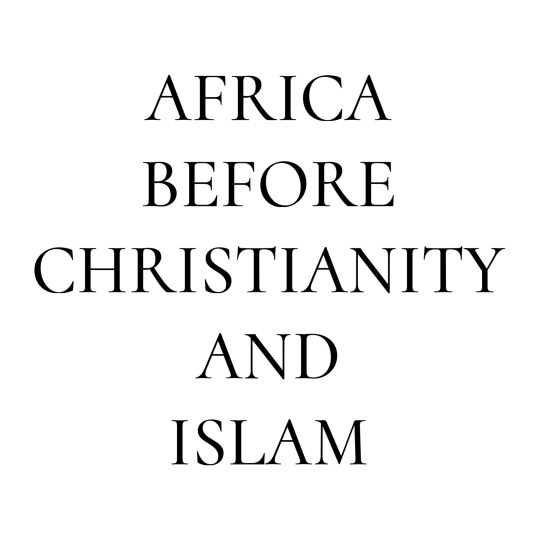
Africa has been very rich even before colonialism
The truth you should know about African
Blacks know your history and divinity
They gave us the Bible and stole our natural resources
Community and Social Cohesion: Traditional African religions often emphasized communal values, fostering a sense of belonging and mutual support within the community. Rituals and ceremonies were communal events that strengthened social ties.
Respect for Nature: Many African traditional religions were deeply connected to nature, promoting a harmonious relationship with the environment. This connection often led to sustainable practices and a respect for the natural world.
Ethical Guidelines: These religions often included moral and ethical guidelines that governed interpersonal relationships. Concepts such as honesty, hospitality, and respect for elders were commonly emphasized.
Cultural Identity: Traditional African religions played a crucial role in shaping cultural identity. They provided a framework for understanding the world, explaining origins, and passing down cultural practices through rituals, myths, and oral traditions.
Islam reached Nigeria through a combination of trade, migration, and cultural interactions. The trans-Saharan trade routes were crucial in bringing Islam to the region. Muslim traders from North Africa and the Middle East ventured into West Africa, establishing economic ties and introducing Islam to local communities.
The city-states along the trade routes, such as Kano and Katsina, became significant centers for Islamic influence. Merchants not only engaged in commercial activities but also played a role in spreading Islamic teachings. Over time, rulers and elites in these city-states embraced Islam, contributing to its gradual acceptance.
Additionally, the spread of Islam in Nigeria was facilitated by the activities of Islamic scholars and missionaries. Scholars known as clerics or Mallams played a key role in teaching Islamic principles and converting people to Islam. They often established Quranic schools and engaged in educational activities that promoted the understanding of Islamic teachings.
Military conquests also played a part in the expansion of Islam in Nigeria. Islamic empires, such as the Sokoto Caliphate in the 19th century, emerged through conquest and warfare, bringing Islam to new territories. The Sokoto Caliphate, led by Usman dan Fodio, sought to establish a strict Islamic state based on Sharia law.
Overall, the spread of Islam in Nigeria was a gradual process influenced by trade networks, migration, the activities of scholars, and, at times, military expansion. The interplay of these factors contributed to the integration of Islam into Nigerian society, shaping its cultural and religious landscape.
In the vast tapestry of Africa's rich cultural heritage, herbal traditional healing stands out as a profound and time-honored practice. African herbal traditional healers, often known as traditional or indigenous healers, play a vital role in the healthcare systems of many communities across the continent. Their practices are deeply rooted in the natural world, drawing on centuries-old wisdom and an intimate understanding of local flora.
African herbal traditional healers are custodians of ancient knowledge, passing down their expertise through generations. They serve as primary healthcare providers in many communities, addressing a wide range of physical, mental, and spiritual ailments. The healing process involves a holistic approach, considering the interconnectedness of the individual with their community and environment.
One of the hallmark features of African herbal traditional healers is their profound knowledge of medicinal plants. These healers have an intricate understanding of the properties, uses, and combinations of various herbs. Passed down through oral traditions, this knowledge is often a well-guarded family secret or shared within the apprentice-master relationship.
The methods employed by herbal traditional healers encompass diverse approaches. Herbal remedies, administered as infusions, decoctions, or ointments, form a significant part of their treatment. These remedies are carefully crafted based on the healer's understanding of the patient's symptoms, lifestyle, and spiritual condition. Additionally, rituals, ceremonies, and prayers are often incorporated into the healing process, acknowledging the interconnectedness of physical and spiritual well-being.
African herbal traditional healers frequently integrate spiritual elements into their practice. They believe that illness can be a manifestation of spiritual imbalances or disharmony. Through rituals and consultations with ancestors or spirits, healers seek to restore balance and harmony within the individual and the community.
Herbal traditional healers are integral to the social fabric of their communities. They often serve not only as healers but also as counselors, mediators, and keepers of cultural traditions. Their practices are deeply intertwined with community life, contributing to the resilience and cohesion of African societies.
While herbal traditional healing holds immense value, it faces challenges in the modern era. The encroachment of Western medicine, issues related to regulation and standardization, and the potential exploitation of traditional knowledge pose threats to this practice. However, there is also a growing recognition of the importance of integrating traditional healing into mainstream healthcare systems, leading to collaborative efforts to preserve and promote this valuable heritage.
African herbal traditional healers are bearers of an ancient legacy, embodying a profound connection between humanity and the natural world. Their healing practices, rooted in herbal wisdom and spiritual insights, offer a unique perspective on healthcare that complements modern medical approaches. Preserving and respecting the knowledge of these healers is not only crucial for the well-being of local communities but also for the broader appreciation of the diverse cultural tapestry that defines Africa.
#life#animals#culture#aesthetic#black history#history#blm blacklivesmatter#anime and manga#architecture#black community
123 notes
·
View notes